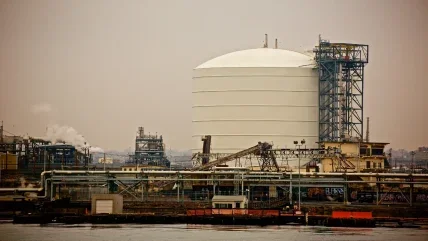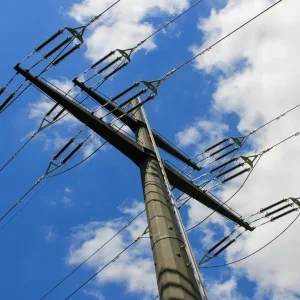
The energy industry, a cornerstone of the global economy, is particularly vulnerable to interstate armed conflicts. The consequences of such conflicts can be wide-ranging and profound, affecting everything from supply chains and production capabilities to pricing and international trade relations. This article delves into the complexities of interstate armed conflict and its multifaceted impacts on the energy sector, highlighting critical areas that industry professionals need to understand and monitor.
Understanding Interstate Armed Conflict
Interstate armed conflict, defined as sustained armed combat between two or more sovereign states, has been a persistent issue throughout history. These conflicts often arise from a combination of political, economic, and territorial disputes. In the contemporary era, the stakes are higher due to the intertwined nature of global economies and the critical role of energy resources.
Energy Supply Chains Under Siege
Disruption of Production and Distribution
Energy supply chains are highly complex and globally interconnected. Key resources such as oil, natural gas, and coal are often located in regions prone to geopolitical tensions. When conflicts erupt, production facilities can be directly targeted or caught in crossfire, leading to significant disruptions. For instance, during the Gulf War, oil facilities in Kuwait were severely damaged, resulting in substantial losses and long-term environmental damage.
Moreover, distribution channels, including pipelines, shipping routes, and logistical networks, can be disrupted. The Strait of Hormuz, a critical chokepoint for global oil transportation, has frequently been a flashpoint in Middle Eastern conflicts. Any disruption in such areas can have immediate and far-reaching effects on global energy supplies.
Impact on Export and Import Markets
Countries involved in interstate conflicts often impose sanctions or embargoes on their adversaries, severely restricting the flow of energy commodities. For example, during the Russia-Ukraine conflict, European nations faced significant challenges due to their reliance on Russian natural gas. Diversifying energy sources and investing in alternative supply routes became urgent priorities for many European countries.
Economic Consequences
Price Volatility
One of the most immediate effects of armed conflict on the energy industry is price volatility. Uncertainty about supply disruptions and potential escalation of conflicts can lead to speculative trading, driving prices up. The Organisation of the Petroleum Exporting Countries (OPEC) has historically played a significant role in stabilising oil prices, but its influence is often challenged during major geopolitical upheavals.
Increased Operational Costs
Companies operating in conflict zones face increased operational costs. Enhanced security measures, higher insurance premiums, and the need to navigate complex political landscapes contribute to the financial burden. For instance, oil companies operating in regions like the Niger Delta in Nigeria incur additional expenses to secure their facilities and protect their workforce from militant activities.
Strategic Shifts in Energy Policies
Diversification of Energy Sources
In response to the risks posed by interstate conflicts, many nations have been prompted to diversify their energy sources. This includes investing in renewable energy technologies such as solar, wind, and hydroelectric power. The European Union, for example, has accelerated its Green Deal initiatives partly in response to the geopolitical instability affecting traditional energy supplies.
Strategic Reserves
Countries maintain strategic petroleum reserves (SPRs) to mitigate the impact of supply disruptions. These reserves act as a buffer during crises, allowing countries to release additional supplies into the market to stabilise prices and ensure continued availability. The United States’ Strategic Petroleum Reserve is one of the largest in the world and has been utilised during various conflicts to cushion the domestic market from global shocks.
Geopolitical Alliances and Energy Security
Formation of Alliances
Interstate conflicts often lead to the formation of geopolitical alliances that impact the energy sector. Countries may band together to ensure mutual energy security, creating alliances such as the International Energy Agency (IEA), which was established to coordinate a collective response to oil supply disruptions.
Energy as a Political Weapon
Energy resources can be used as a political weapon during conflicts. Nations with significant energy reserves may manipulate supplies to exert pressure on adversaries. The 1973 oil embargo by Arab OPEC members, which targeted nations supporting Israel during the Yom Kippur War, is a prime example. The embargo led to a dramatic increase in oil prices and forced many Western countries to reassess their energy policies and dependencies.
Technological and Infrastructure Implications
Resilience and Redundancy
To mitigate the risks associated with interstate conflicts, the energy industry is increasingly focused on enhancing the resilience and redundancy of its infrastructure. This includes building multiple pipelines, developing alternative shipping routes, and investing in advanced monitoring and repair technologies to quickly address any damage caused by conflict.
Cybersecurity Threats
Interstate conflicts in the modern era are not limited to physical confrontations but also encompass cyber warfare. Energy infrastructure, including power grids and pipeline networks, is vulnerable to cyberattacks that can disrupt operations and cause widespread chaos. The 2010 Stuxnet attack on Iran’s nuclear programme highlighted the potential for cyber warfare to target critical energy infrastructure, prompting the industry to bolster its cybersecurity measures.
Environmental and Humanitarian Impact
Environmental Damage
Armed conflicts can result in significant environmental damage, particularly when energy infrastructure is targeted. Oil spills, gas leaks, and fires can lead to long-term ecological harm. The Kuwaiti oil fires during the Gulf War released massive amounts of pollutants into the atmosphere, causing health problems and environmental degradation that persisted for years.
Humanitarian Concerns
The human cost of interstate conflicts is profound, with communities in conflict zones often suffering the most. Energy infrastructure destruction can lead to fuel shortages, power outages, and disrupted access to essential services. Humanitarian organisations frequently struggle to provide aid in such conditions, exacerbating the plight of affected populations.
Case Studies
Russia-Ukraine Conflict
The ongoing conflict between Russia and Ukraine has had a significant impact on the energy industry, particularly in Europe. Russia’s annexation of Crimea in 2014 and subsequent hostilities have led to a series of sanctions and counter-sanctions affecting energy trade. Europe, heavily dependent on Russian natural gas, has had to explore alternative suppliers and invest in liquefied natural gas (LNG) terminals to reduce reliance on Russian pipelines.
Middle East Conflicts
The Middle East, home to some of the world’s largest oil reserves, has been a hotspot for interstate conflicts. The Iran-Iraq War in the 1980s, the Gulf Wars, and the ongoing tensions between Iran and Saudi Arabia have all had significant implications for global oil markets. These conflicts have underscored the importance of the region in the global energy landscape and the vulnerabilities associated with it.
Future Outlook
Increasing Importance of Renewable Energy
As the world moves towards a greener future, renewable energy sources are expected to play a larger role in mitigating the impacts of interstate conflicts on the energy industry. Investments in solar, wind, and other renewable technologies can reduce dependency on conflict-prone regions and contribute to greater energy security.
International Cooperation
Enhanced international cooperation and diplomatic efforts are crucial in addressing the root causes of interstate conflicts and ensuring the stability of the global energy market. Organisations like the United Nations and the International Atomic Energy Agency (IAEA) play a vital role in promoting peace and security, which in turn benefits the energy sector.
Technological Innovation
Advancements in technology will continue to shape the energy industry’s resilience to interstate conflicts. Innovations in energy storage, grid management, and cybersecurity are essential for building a robust infrastructure capable of withstanding geopolitical disruptions.
Conclusion
Interstate armed conflicts pose significant challenges to the energy industry, affecting supply chains, pricing, and international relations. Understanding the multifaceted impacts of these conflicts is crucial for industry professionals and policymakers. By investing in diversification, enhancing infrastructure resilience, and fostering international cooperation, the energy sector can better navigate the uncertainties of a conflict-prone world. As global dynamics continue to evolve, the ability to adapt and innovate will be key to ensuring a stable and secure energy future.






